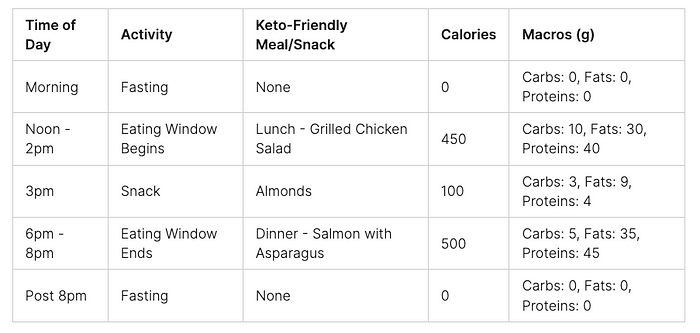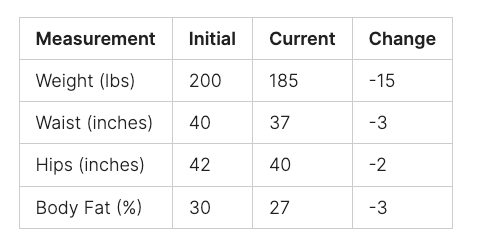Embarking on your weight loss journey can be daunting, but with the right keto diet tips, you’re already one step ahead! The ketogenic diet, a high-fat, moderate-protein, and low-carb eating plan, taps into the power of ketosis to effectively shed pounds. If you’re new to this path, don’t fret — essential keto tips are here to guide you. Cutting your carb intake to a mere 20 to 50 grams daily, you’ll unlock a metabolic state primed for burning fat. It’s not just about losing weight; implementing effective keto diet tips can enhance heart health and regulate blood sugar for an overall health boost.
For those commencing this dietary shift, keto diet beginners tips stress the importance of adherence to macronutrient ratios — crucial in making the switch from glucose to fat for energy. Whether you’re looking for the easiest keto diet tips or seeking advice from expert keto tips, remember, consistency is king. By selecting nutrient-dense, whole foods over processed variants, you’re elevating your body’s fat-burning efficiency. Take heart, it’s not just about what you eliminate; it’s about embracing a holistic approach to well-being. Top keto diet tips often involve a harmonious blend of diet, movement, and psychological wellness, ensuring your keto journey is not just successful, but sustainable too.

Show a person standing on a scale with a big smile on their face, while surrounded by healthy food options like avocado, salmon, spinach, and almonds. In the background, depict a gym with weights and cardio equipment, indicating the benefits of exercise in conjunction with the ketogenic diet. Use bright colors to emphasize positivity and success in weight loss.
Key Takeaways
- Adopting ketogenic diet tips can kickstart your weight loss and enhance metabolic health.
- Keeping daily carbs under 50 grams is one of the best keto tips to maintain ketosis.
- Successful keto tips include eating whole, nutrient-rich foods for sustainable health gains.
- Creating a calorie deficit while on keto is an effective keto diet tip for weight loss.
- Expert keto tips advocate for managing lifestyle factors like stress and sleep to support your diet.
- Incorporate consistent exercise, as recommended by top keto diet tips, to complement your eating plan.
Leveraging Macronutrient Ratios for Ketosis
Switching to a low carb way of eating is the cornerstone of the ketogenic diet, focusing on tapping into the metabolic state of ketosis. By adjusting your intake of carbs, fats, and proteins to optimal levels, you prime your body to use fat for energy rather than glucose. Embarking on this journey requires a solid understanding of macronutrient tracking and embracing apps like MyFitnessPal to keep a vigilant eye on your daily intake. Let’s dive into the specific macronutrient ratios that propel you towards ketosis and weight loss success.
Understanding the Importance of Low Carb Intake
The shift to a ketogenic diet means drastically reducing your carbohydrate intake to about 5% of your total calories, a significant drop from traditional dietary recommendations. This discipline in carb consumption is the spark that ignites the ketosis engine, encouraging your body to start burning fat instead of sugar for fuel.
Figuring Out Fat Consumption for Optimal Ketosis
Once you’ve curbed your carb intake, the next step is to increase your consumption of healthy fats. This doesn’t mean free reign over all fats — choices like avocados, nuts, and seeds are your allies in reaching optimal ketosis. Adequate fat intake is critical to fuel your body and satisfy hunger pangs in the absence of carbs.
Adjusting Protein to Preserve Muscle Mass
Protein plays a dual role in your ketogenic diet. While it’s essential to consume enough to preserve muscle mass, overindulgence might counteract your efforts to maintain ketosis. Striking the right balance with protein intake ensures your muscles are protected as you lose weight predominantly from fat stores.

Prioritizing Whole Foods Over Processed Alternatives
Embarking on a journey towards healthy weight loss on the keto diet hinges on choosing nutritious whole foods over their processed counterparts. By focusing on unprocessed foods, you’re not only enhancing the quality of your diet but also avoiding the pitfalls of calorie-dense snacking options that can impede your progress.
https://cdn.embedly.com/widgets/media.html?src=https%3A%2F%2Fwww.youtube.com%2Fembed%2FF5iMUdbGsWI%3Ffeature%3Doembed&display_name=YouTube&url=https%3A%2F%2Fwww.youtube.com%2Fwatch%3Fv%3DF5iMUdbGsWI&image=https%3A%2F%2Fi.ytimg.com%2Fvi%2FF5iMUdbGsWI%2Fhqdefault.jpg&key=a19fcc184b9711e1b4764040d3dc5c07&type=text%2Fhtml&schema=youtube
While the convenience of keto-friendly snack bars and keto desserts may be tempting, they often come packed with hidden sugars and high-calorie processed foods that can lead to a surplus of calories and a dearth of essential nutrients. Let’s draw the focus away from these processed foods and turn our attention to the wholesome, real foods that should populate your plate.
- Fresh, pastured meats offer high-quality protein and essential nutrients minus the additives found in many pre-packaged meats.
- For a balanced approach to fat intake, incorporating healthy fats such as avocado and olive oil not only enhances flavor but supports ketosis — a vital aspect of the keto diet.
- Pair these components with a colorful array of non-starchy vegetables to elevate your meals with volume, fiber, and vital micronutrients.
- Eggs and fish are excellent protein choices that also provide beneficial fats, playing a double role in your ketogenic diet.
- When selecting dairy, opt for full-fat options which can be more satisfying and less processed than their low-fat or fat-free counterparts.
By steering clear of heavily processed foods and embracing the nutrient-dense variety of whole foods, you’re building a keto-friendly diet that’s intended to promote not only weight loss but also a state of overall well-being. Rethink your grocery list and make a concerted effort to include foods in their most natural state — your body and your taste buds will thank you for it!
Another advantage of whole foods is their inherent composition that often requires more energy for digestion, hence potentially boosting your metabolism. These foods contribute to a sense of fullness, reducing the likelihood of overeating, and providing a steady supply of energy — critical factors in achieving and maintaining a healthy weight on the keto diet.
In contrast, many packaged keto products contain healthy fats, but they might also include artificial additives or excessive sweeteners that could disrupt your metabolic balance. Therefore, it’s essential to read labels carefully and prioritize real food whenever possible. The keto lifestyle is one rooted in mindful consumption and a deepening appreciation for foods that nourish and energize.
Creating a Caloric Deficit for Weight Loss
Embarking on a ketogenic diet brings to light the importance of managing your calorie intake to achieve a successful reduction in weight. Understanding the essence of a calorie deficit — the differential between calories consumed and those expended — is vital. While indulging in keto-friendly foods, maintaining a keen eye on the caloric content helps avoid any hindrance to your progress.
Let’s examine key strategies for ensuring that every bite is not only delicious but also contributes to your weight loss journey. Incorporating physical activity into your routine amplifies your caloric expenditure, coupling beautifully with a well-planned keto regimen to fuel your success.
Calculating Your Individual Caloric Needs
Grasping your unique caloric requirements is a stepping stone towards establishing the necessary deficit for weight loss. By evaluating factors like your basal metabolic rate (BMR) and daily activity level, you gain insights into how much energy your body requires and, consequently, how to adjust your calorie control tactics to fall in line with your weight loss goals. Remember, the aim is to feel full and satisfied with satisfying ketogenic meals, all while steadily shepherding your body towards a caloric deficit.
Portion Control and Meal Planning
Wisdom lies in measured consumption — portion control paves the way to ensuring you’re not unwittingly exceeding your caloric needs. Meal planning proves indispensable in this aspect, as pre-determining meal sizes and contents helps you avoid the all-too-common pitfall of accidental overeating. Embrace the practice of measuring portions and creating a meal schedule that aligns with your calorie targets for weight loss.
Recognizing Satiety and Limiting Snacks
The ketogenic diet is renowned for its ability to engender a sense of satiety. Thanks to the high-fat, moderate-protein composition of the diet, you won’t find yourself wrestling with constant hunger. Heed the signals your body sends when it’s had enough — recognizing satiety is an acquired skill that protects you from the trap of unnecessary snacking. Keeping a diary or log can be a pragmatic approach to monitor your eating habits and maintain calorie control.
While the occasional snack is not off the table, mindfulness regarding its frequency and substance is key. If you find yourself reaching for a snack, ensure it’s low in calories but high in nutritional value — a principle that should hold true for all your keto endeavors.

Managing Other Lifestyle Factors Affecting Weight Loss
Keto isn’t just about what you eat; it’s also about your overall lifestyle choices and how they impact your weight loss journey. It’s essential to consider how factors beyond diet, such as chronic stress and inadequate sleep, can affect your metabolic state and energy expenditure. Let’s take a closer look at how you can adjust these lifestyle factors for better weight loss outcomes while following a ketogenic diet.
Addressing Sleep and Stress for Better Results
Chronic stress and not getting adequate sleep are more than just nuisances; they have tangible effects on your physiological well-being. High cortisol levels — a result of prolonged stress — encourage your body to store fat, particularly around your midsection. To combat this, integrating practices such as meditation and yoga into your daily routine can significantly lower stress levels. Additionally, prioritizing adequate sleep each night helps regulate hunger hormones, which, in turn, can manage needless snacking and overindulgence. Embracing these habits is a critical step towards reducing stress, enhancing the quality of your sleep, and setting the stage for successful weight loss on keto.
Integrating Physical Activity to Complement Your Keto Diet
Engaging in physical activity is not only beneficial for your overall health but also boosts the effectiveness of the ketogenic diet in your weight loss efforts. A regular exercise routine increases your energy expenditure, allowing for greater fat loss and improved metabolic function. It’s important to maintain a workout schedule that fits into your lifestyle and enhances your ketosis. Whether it’s a brisk walk, a gym session, or a home workout, consistent movement is key to maximizing the potential of your keto diet. Make sure to keep yourself motivated by tracking your progress and setting attainable fitness goals.


A person doing a keto-friendly workout routine, such as weightlifting or running, with a background of healthy low-carb food options like green vegetables and lean proteins. The image should convey the idea of the synergy between a ketogenic diet and exercise for weight loss and healthy living.
Keto Diet Tips: The Impact of Consistency
Embarking on a keto journey towards your weight loss goals demands more than just a fleeting commitment to low carb eating. Your success in maintaining ketosis is contingent upon a steadfast adherence to dietary consistency. Achieving a ketotic state is not a once-off event; it’s a process sustained by the choices you make every day. With precise tracking of your macros, you foster a foundation upon which ketosis thrives.
Moreover, chronic stress management plays a pivotal role in navigating the keto path. Chronic stress, if left unchecked, can wreak havoc on your system, potentially throwing a spanner in the works of your meticulous dieting efforts. Cultivating healthy lifestyle changes, such as routine meditation or yoga, helps safeguard your journey against the detrimental impacts of stress.
Regular exercise, in tandem with your dietary efforts, acts as a catalyst for weight loss. Not only does it enhance calorie burn, but it also contributes to muscle preservation and mental clarity, both of which arm you with resilience on this transformative journey. Staying active further ensures that your body remains primed for optimal fat-burning in ketosis.
- Commit to daily tracking of macronutrients to stay in control of your diet
- Integrate stress-reducing activities into your daily routine for holistic health
- Set a schedule for regular workouts to enhance your ketotic state

When you align these pillars — dietary consistency, stress management, and regular exercise — you chart a course for triumph in the keto landscape. Invest in these habits, and watch how the stronghold of consistency elevates your journey beyond mere weight loss, launching you towards enhanced wellness and vitality.
Adapting Keto for Targeted Weight Loss
Embarking on the ketogenic diet means focusing on your specific weight loss goals, and the cornerstone of this approach is personal macros calculation. To achieve targeted fat loss, you need to establish a calorie deficit for weight loss, which you can calculate with tools such as My Fitness Pal. Tracking is effortless with My Fitness Pal tracking, allowing you to monitor your intake of fats, proteins, and more crucially, your carbs to ensure you’re within your daily macros.
Intermittent Fasting or Time-Restricted Eating (TRE) is another method to augment your keto efforts. By restricting your eating windows to a 6–8 hour period each day, you can promote a higher rate of fat burn and reduce overall caloric intake. IF is highly adaptable to match your lifestyle and hunger patterns, making it a versatile tool for weight management.

Create an image of a woman practicing intermittent fasting, with a clock in the background and a bowl of healthy food in front of her. The woman should look motivated and focused, with determination in her eyes. Her body language should convey discipline and self-control. The clock should show the fasting window, while the bowl of food represents the eating window. The overall vibe should be positive and inspiring, suggesting that with commitment and dedication, anyone can achieve their weight loss goals with keto diet and intermittent fasting.
Let’s look at how you can effectively calculate your macros and incorporate intermittent fasting into your ketogenic lifestyle to enhance your weight loss journey:
- Determine your daily caloric needs based on factors like age, sex, weight, height, and physical activity level.
- Set a goal for a calorie deficit to ensure you’re burning more than you’re consuming — a crucial factor in losing weight.
- Use My Fitness Pal to log your daily food intake and stay within your personal macro ratios.
- Pick an eating window that suits your daily routine and stick to it, making sure to stop eating outside of these hours.
- Plan your meals within this period to align with your macros and calorie deficit.
Here’s a table to help you organize your keto diet plan with intermittent fasting, personal macro calculation, and your calorie deficit:

A tailored approach to the keto diet with personalized macronutrient tracking and intermittent fasting can lead to more effective and targeted weight loss. Remember, it’s about creating a calorie deficit in a way that works for your body and your life. With dedication and consistency, adapting these strategies can bring you closer to your desired health and fitness goals.
Steering Clear of Common Keto Pitfalls
Maintaining a carb-restricted diet can be challenging, especially when hidden carbs creep into what are marketed as keto-friendly products. Being vigilant about nutritional labels is crucial to ensure you’re not accidentally sabotaging your efforts to stay in ketosishttps://5f49d3reh1ndhl8tz-6lblev7p.hop.clickbank.net. Additionally, dairy sensitivity and water retention might also warrant attention to keep your diet on track for consistent weight loss.
Avoiding Hidden Carbs in Keto-Friendly Foods
When selecting low-carb snacks and meals, it’s essential to scrutinize the nutritional labels for hidden carbs that could disrupt your state of ketosis. Foods and condiments may contain sugars and starches that are not always obvious at first glance. Watch out for ingredients like maltodextrin, dextrose, and other carb-rich additives that can slip under the radar.
Understanding the Role of Dairy and Alternatives
While dairy is a staple in many ketogenic diets, some individuals may experience dairy sensitivity which can lead to undesirable water retention and inflammation. If you notice your weight loss stalling, consider evaluating your dairy intake and exploring dairy-free alternatives. Almond milk, coconut cream, and nutritional yeast can be excellent dairy substitutes that align well with a keto lifestyle.
- Inspect labels diligently to keep hidden carbs in check.
- Stay aware of carb-creep even from sources that appear keto-friendly.
- Understand how dairy impacts your body and adjust intake accordingly.

Exploring the Science Behind Keto and Metabolic Health
When you delve into the world of ketogenic diets, you’re not only stepping into a different eating pattern, but you’re also tap-dancing on the complex stage of metabolic health. This low-carb, high-fat dietary approach goes hand in hand with metabolic syndrome risk factors, potentially offering a science-backed avenue for metabolic health improvement. Let’s unpack the mechanisms at play, focusing on the role of ketosis in regulating insulin resistance and the potential of keto to foster positive change in blood sugar management.
The Role of Ketosis in Metabolic Syndrome
Metabolic syndrome presents a clutch of risk factors that hike up the odds for heart disease, diabetes, and other health troubles. This cluster includes, but is not limited to, obesity, hypertension, and spiraling blood sugar levels. The ketogenic diet enters this fray with a beacon of hope — ketosis itself. This intricate metabolic switch is where your body burns fat for fuel instead of glucose, subsequently reducing insulin levels and shrinking obesity’s footprint. Data suggests that a consistent ketogenic eating pattern might combat several metabolic syndrome criteria, potentially rolling back the risk of chronic illnesses associated with it.
How Keto Can Influence Insulin Sensitivity
One of the most celebrated aspects of ketogenic diets is their marked ability to modulate insulin sensitivity. By slashing carb intake, your body’s demand for insulin takes a tumble, which can be particularly beneficial if you’re tiptoeing around the edges of insulin resistance. The subsequent downslide in insulin levels invites an array of metabolic health improvements, allowing for more efficient blood sugar management. Notably, the lost pounds, especially the notorious abdominal fat, not only serve aesthetic goals but also play a significant role in bettering insulin functionality, crowning ketogenic diets as a potential ally against diabetes.
While ‘keto’ often becomes synonymous with weight loss, it’s the behind-the-scenes metabolic wizardry that deserves much of the fanfare. By arming yourself with the knowledge of how ketosis works in your favor, you’re better prepared to navigate the keto landscape, making informed choices that support not just weight loss, but all-round metabolic health.
Monitoring Progress and Adjusting as Needed
The path to a successful ketogenic transformation is paved with ongoing progress tracking and macronutrient adjustments. Knowing when to modify your keto strategy is pivotal to sustaining your journey toward health and wellness. Tracking your macros and body measurements provides tangible data to gauge effectiveness and guide necessary dietary modifications.
Tracking Macros and Body Measurements
To ensure weight loss tracking accuracy, look beyond the scale. Regularly logging body measurements offers a comprehensive view of your progress and can highlight changes that might not be evident from weight alone. Pairing this data with careful macronutrient tracking through apps like MyFitnessPal offers a powerful toolset for monitoring your ketosis journey. Keep a vigilant eye on your macro consumption, ensuring it syncs up with your body’s changing needs as you evolve on the keto diet.
When to Tweak Your Keto Plan
Even a well-devised plan may require adjustments over time. Consider macronutrient adjustments if you hit a plateau or experience changes in energy levels. For example, if you’re consistently hitting your macros but your weight stalls, it might be time to reassess and recalibrate your fat and protein intake. Changes in physical activity, whether an uptick or downshift, may also call for a proportional response in caloric intake and macro ratios. These refinements are critical for dietary modifications that maintain the balance necessary for continued progress on your keto journey.

By adhering to these progress tracking methods, you hone in on what works best for your body, enabling a fine-tuned approach to the keto diet. Alterations grounded in consistent data collection and analysis solidify the adaptability of your keto plan, guiding you towards the results you’re aiming for. So, remember to track, measure, and adjust as you continue to forge your path to wellness with keto.
Conclusion
Navigating the path to a healthier you with keto means embracing a ketogenic lifestyle maintenance strategy that ensures sustained health benefits and long-term weight loss. Your dedication to dietary adherence and setting realistic expectations significantly increase the chances of achieving your health and wellness objectives. It’s not just about the immediate gratification of shedding pounds; it’s about committing to a lifestyle that continuously supports metabolic improvements.
Maintaining a keto diet isn’t a short-term fix but a long-term change. To reap the extensive benefits, including weight management and metabolic health, it’s critical to persist with macronutrient ratios, incorporate whole foods into your diet, and manage lifestyle factors such as stress and sleep. Continually monitoring progress and adjusting your dietary plans will help refine and sustain your journey towards health optimization.
By fostering a keto lifestyle rooted in comprehensive nutrition and wellness habits, you’ll not only witness weight-related changes but also partake in the broader spectrum of health benefits that keto offers. Let this be your impetus to explore and institute keto, not just as a diet but as a sustainable and rewarding way of life, knowing that a robust body of scientific research backs its efficacy. Your health transformation awaits on this road of informed choices and enduring commitment.
(Disclosure: Some external links in this post are affiliate links.)
FAQ
What are the best ways to start losing weight on a keto diet?
To begin losing weight on a keto diet, start by calculating your daily macronutrient needs to ensure you’re eating the right balance of fats, proteins, and carbs. Prioritize whole, unprocessed foods, establish a moderate calorie deficit, and manage lifestyle factors like stress and sleep. Combine these strategies with regular physical activity for the best results.
How important are macronutrient ratios in achieving ketosis?
Macronutrient ratios are crucial for reaching ketosis. Aim to drastically reduce your carb intake to about 5% of your total calories, increase fat consumption to become your primary energy source, and consume adequate protein to maintain muscle mass. Tools like MyFitnessPal can help in tracking your daily macros effectively.
Why is it encouraged to eat whole foods over processed keto options?
Whole foods provide essential nutrients that are often lacking in processed keto options. They also contain less sugar and fewer additives, helping to maintain ketosis and support overall health. Whole foods such as pastured meats and healthy fats can also promote satiety, making it easier to stick to your calorie goals for weight loss.
How do I create a caloric deficit on a keto diet?
To create a caloric deficit on a keto diet, calculate your calorie needs based on your physical activity level and goals. Once you know that number, plan meals and control portions to consume fewer calories than you expend. Remember to listen to your hunger cues and avoid overeating, even with keto-friendly foods.
How can I address sleep and stress to improve my weight loss results?
Poor sleep and high-stress levels can hinder weight loss. To address these, practice good sleep hygiene, such as establishing a relaxation routine before bed, and manage stress through methods like meditation, yoga, or deep-breathing exercises. Balancing these factors can lower cortisol levels and support your weight loss efforts.
How important is physical activity when following a keto diet?
Physical activity enhances the effects of the keto diet by boosting energy expenditure and fat loss. It’s recommended to incorporate a mix of aerobic and strength training exercises to complement the diet and improve overall health. Regular exercise can also help you maintain metabolic flexibility and ketosis.
What is the importance of consistency in a successful keto diet?
Consistency in following prescribed macronutrient ratios, maintaining regular exercise, and managing stress and sleep are key factors for a successful keto diet. They help to ensure your body remains in a state of ketosis, driving weight loss and improving health markers.
How can personal macro calculations lead to targeted weight loss on keto?
By calculating your personal macros and creating a calorie deficit tailored to your needs, you can aim for targeted weight loss. Tracking your intake, possibly with apps like My Fitness Pal, and experimenting with Intermittent Fasting or Time-Restricted Eating can enhance the fat-burning effects of keto.
How can I avoid hidden carbs and understand the effects of dairy on my keto diet?
Carefully read nutritional labels to avoid hidden carbs in foods that are marketed as keto-friendly. If you suspect dairy is affecting your weight loss due to water retention or inflammation, consider reducing your intake or opting for alternative sources of fats and nutrients.
In what ways does the keto diet improve metabolic health and manage conditions like metabolic syndrome?
The keto diet can improve metabolic health by reducing carbohydrate intake, thus lowering insulin levels and improving insulin sensitivity. This helps manage blood sugar levels and can be protective against metabolic syndrome, which includes risk factors like obesity and high blood pressure.
How do I track my progress on a keto diet, and when should I adjust my diet plan?
Track your progress by monitoring your macros, body measurements, and weight. Pay attention to how your body responds, and if you hit a plateau or experience changes in body composition, consider adjusting your macronutrient ratios or caloric intake, and also look into modifying your exercise routine to continue making progress.


